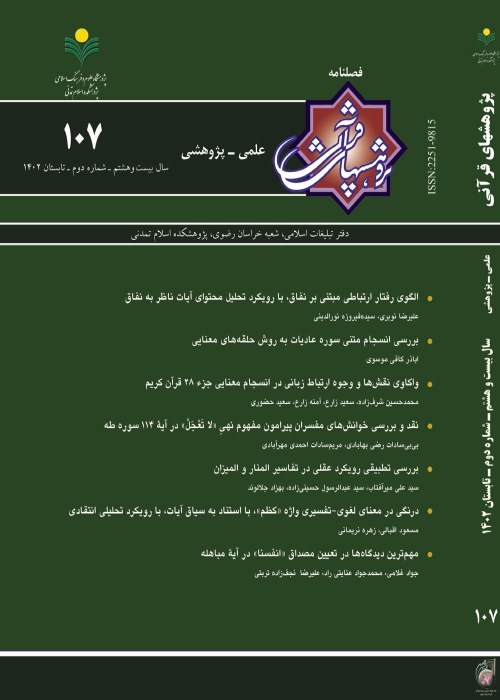Differences between the Sulṭānī and Ottoman Orthography
Author(s):
Abstract:
Writing has always been the best tool for recording thoughts and transferring knowledge; however, in many cases it requires gradual development so as to display the sounds of the words. For this reason, it has certain deficiencies, one of which is the existence of marks which are written but not read, and the second one is the existence of marks which are written but their sound is other than what has been set to be; and the third is the sounds that exist in speaking but there are no marks for them.The word's syllable in the Quran is almost in full conformity with speech except in cases that the long vowel marks (alif, wāw, yā’) seem to be omitted or added. In the present article, the status and significance of the Quran orthography among the Muslims and the differences between the Ottoman and Sulṭānī orthographies are dealt with.
Language:
Persian
Published:
Qur'anic Researches, Volume:13 Issue: 3, 2008
Page:
332
magiran.com/p493258
دانلود و مطالعه متن این مقاله با یکی از روشهای زیر امکان پذیر است:
اشتراک شخصی
با عضویت و پرداخت آنلاین حق اشتراک یکساله به مبلغ 1,390,000ريال میتوانید 70 عنوان مطلب دانلود کنید!
اشتراک سازمانی
به کتابخانه دانشگاه یا محل کار خود پیشنهاد کنید تا اشتراک سازمانی این پایگاه را برای دسترسی نامحدود همه کاربران به متن مطالب تهیه نمایند!
توجه!
- حق عضویت دریافتی صرف حمایت از نشریات عضو و نگهداری، تکمیل و توسعه مگیران میشود.
- پرداخت حق اشتراک و دانلود مقالات اجازه بازنشر آن در سایر رسانههای چاپی و دیجیتال را به کاربر نمیدهد.
In order to view content subscription is required
Personal subscription
Subscribe magiran.com for 70 € euros via PayPal and download 70 articles during a year.
Organization subscription
Please contact us to subscribe your university or library for unlimited access!


